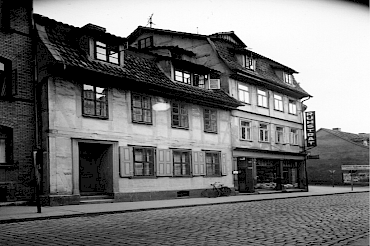Construction of the first resistance-heated high-temperature furnace
with Prof. Walther Nernst
1896
"As is well known, Göttingen industry has always attached the greatest importance to close cooperation with the university and has worked out a large number of apparatuses according to the instructions of the lecturers, which are now found in scientific laboratories and institutes all over the world." [1]
Even in the early years of their young company, the Ruhstrat brothers also collaborated with the University of Göttingen. Together with the later Nobel Prize winner Prof. Walther Nernst, they developed an electrically heated high-temperature furnace for melting metals, which was first built in 1896 and later further developed by the "old master of German metallurgy," Prof. Gustav Tammann:
"Privy Councillor Tammann has earned special merit through the suggestions he gave to Ruhstrat, A.-G., and its sister company, Elektroschaltwerk-A.-G., in the construction of the high-temperature furnaces. The furnaces were originally intended only for scientific purposes, especially for metallographic laboratories, but in more recent times the furnaces have also found use in engineering, up to sizes of 150 kg of molten material." [1]
The furnaces offered as 'Electric Crucible Melting Furnaces' were available in various designs, as this page of a brochure from the Göttinger Werke Association shows [2]:
The earliest representations of the Tammann furnace that we have are those shown here from the 1920s.
If you have older depictions (drawings, photographs, illustrations, etc.) or additional information that you can provide, we would appreciate your contacting us.
Sources:
[1] Erich Löwenstein, Elektrische Hochtemperaturöfen bis 3300 C.
Nach Geheimrat Prof. Dr. Tammann, Göttingen.
In Zeitschrift für anorganische und allgemeine Chemie Bd. 154 (1926) S. 173 – 177
[2] Vereinigung Göttinger Werke, Prospekt M4, Göttingen 1927(?), S. 12



